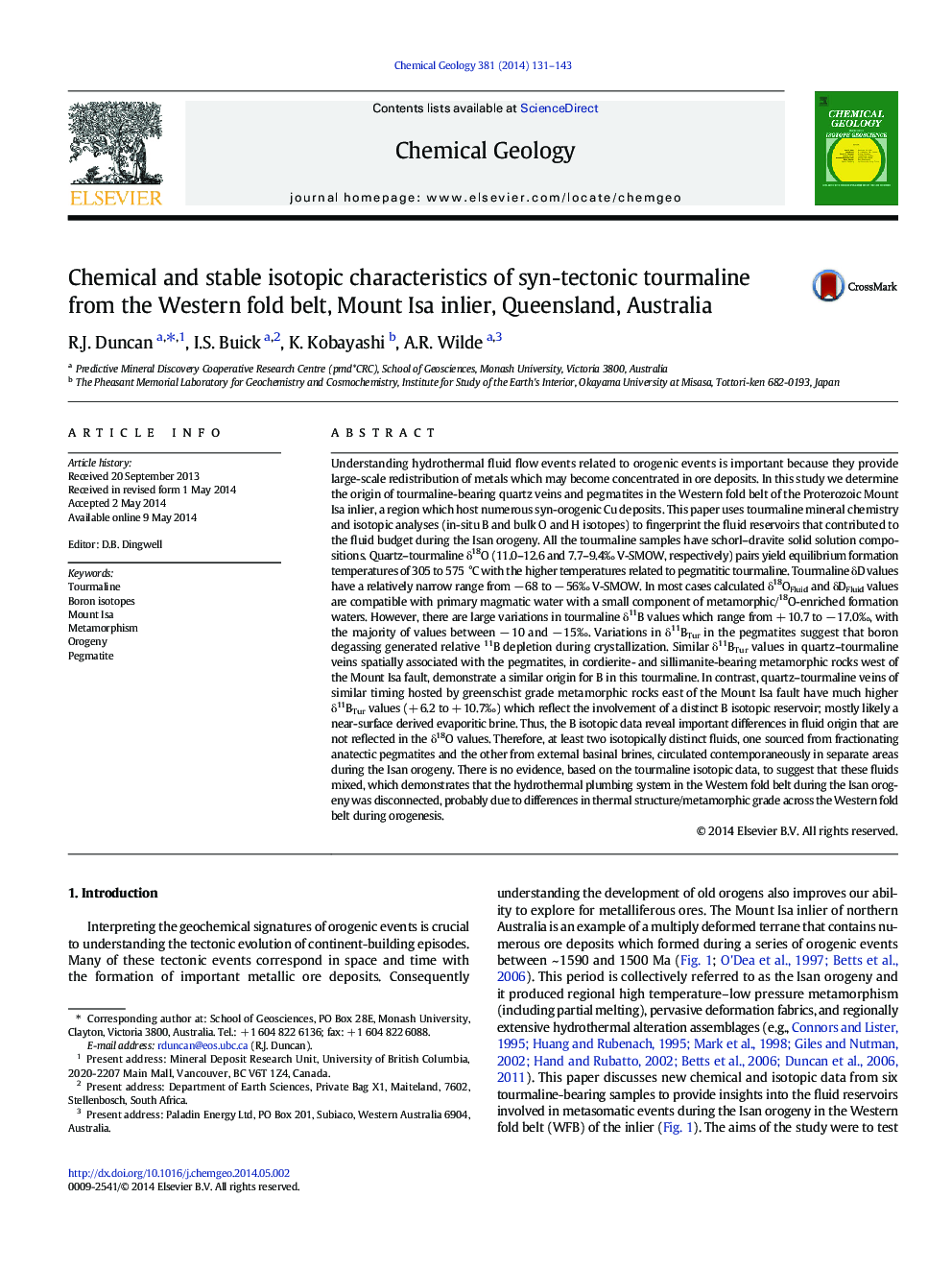| کد مقاله | کد نشریه | سال انتشار | مقاله انگلیسی | نسخه تمام متن |
|---|---|---|---|---|
| 6436607 | 1637591 | 2014 | 13 صفحه PDF | دانلود رایگان |

- Tourmaline B isotopes reveal a range of values not seen in O and D data.
- Values are consistent with both magmatic and basinal B sources.
- There appears to be no mixing of the two sources.
- This has implications for the hydrothermal plumbing during orogenesis.
Understanding hydrothermal fluid flow events related to orogenic events is important because they provide large-scale redistribution of metals which may become concentrated in ore deposits. In this study we determine the origin of tourmaline-bearing quartz veins and pegmatites in the Western fold belt of the Proterozoic Mount Isa inlier, a region which host numerous syn-orogenic Cu deposits. This paper uses tourmaline mineral chemistry and isotopic analyses (in-situ B and bulk O and H isotopes) to fingerprint the fluid reservoirs that contributed to the fluid budget during the Isan orogeny. All the tourmaline samples have schorl-dravite solid solution compositions. Quartz-tourmaline δ18O (11.0-12.6 and 7.7-9.4â° V-SMOW, respectively) pairs yield equilibrium formation temperatures of 305 to 575 °C with the higher temperatures related to pegmatitic tourmaline. Tourmaline δD values have a relatively narrow range from â 68 to â 56â° V-SMOW. In most cases calculated δ18OFluid and δDFluid values are compatible with primary magmatic water with a small component of metamorphic/18O-enriched formation waters. However, there are large variations in tourmaline δ11B values which range from + 10.7 to â 17.0â°, with the majority of values between â 10 and â 15â°. Variations in δ11BTur in the pegmatites suggest that boron degassing generated relative 11B depletion during crystallization. Similar δ11BTur values in quartz-tourmaline veins spatially associated with the pegmatites, in cordierite- and sillimanite-bearing metamorphic rocks west of the Mount Isa fault, demonstrate a similar origin for B in this tourmaline. In contrast, quartz-tourmaline veins of similar timing hosted by greenschist grade metamorphic rocks east of the Mount Isa fault have much higher δ11BTur values (+ 6.2 to + 10.7â°) which reflect the involvement of a distinct B isotopic reservoir; mostly likely a near-surface derived evaporitic brine. Thus, the B isotopic data reveal important differences in fluid origin that are not reflected in the δ18O values. Therefore, at least two isotopically distinct fluids, one sourced from fractionating anatectic pegmatites and the other from external basinal brines, circulated contemporaneously in separate areas during the Isan orogeny. There is no evidence, based on the tourmaline isotopic data, to suggest that these fluids mixed, which demonstrates that the hydrothermal plumbing system in the Western fold belt during the Isan orogeny was disconnected, probably due to differences in thermal structure/metamorphic grade across the Western fold belt during orogenesis.
Journal: Chemical Geology - Volume 381, 14 August 2014, Pages 131-143